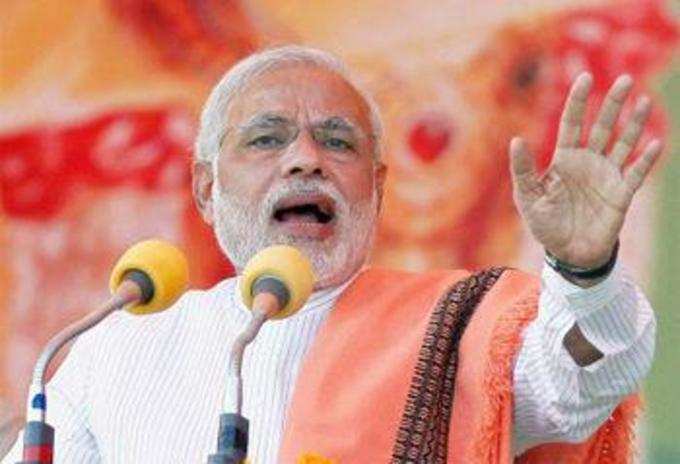 NEW DELHI:
NEW DELHI: Latching on to a December 2013 circular on
The retaliation from both BJP and
"Planning Commission guidelines to states in 2004 say poverty criteria for Gujarat is Rs 324 per capita for rural areas and Rs 501 for urban areas. These instructions still hold good," Gujarat
Patel stressed that since the Gujarat government found the "income limit" drawn by the panel "too little" which would have left out most poor families, it uses the list prepared by its own rural development department to identify beneficiaries of anti-poverty schemes. As a result, the number of beneficiaries stood at 32 lakh as against the 21 lakh which could have qualified if the Planning Commission’s line had been used as the sole benchmark, he said.
While insisting that Gujarat government could not have done away with the Rs 10.80 a day drawn up by the plan panel, Patel emphasized that Gujarat had repeatedly asked the Centre to redraw the norms, with Modi himself raising the matter at the
At the heart of the controversy is the non-revision of Planning Commission’s "poverty line" since it was drawn in 2004. The much-maligned Tendulkar panel was supposed to rework the criterion, but its recommendations -- Rs 27.20 for rural areas and Rs 33.30 for urban ones -- were junked following public outcry.
A fresh panel under chairman of PM’s Economic Advisory Council C Rangarajan was set up to work out a new yardstick, but it is yet to submit its recommendations.
However, Maken defended the Planning Commission, saying the panel had clarified in 2011 that its poverty line had nothing to do with eligibility of beneficiaries for welfare schemes which would be determined by socio-economic caste census based on deprivation parameters of households.
However, Gujarat finance minister Patel said the state government had no option but to continue with the norms drawn by the plan panel. On the December circular, he said, "It neither fixes any new income limit nor decides any new policies. It is only a clarification issued to field officers that any family which comes in either of the criteria has to be given BPL card." He further said the circular made it clear that no income criterion will be applied in the case of those figuring on the BPL list of rural development department.
"An income criteria has to be applied only for families which are not figuring in the BPL list of the rural development department," Patel said.
"We are following Planning Commission criteria of January 2004. According to the same order, for Delhi where Congress ruled for last 15 years, criteria for identifying BPL families is Rs 369.69 (rural) and Rs 541.48 (urban). For Congress ruled Andhra Pradesh, it’s Rs 263.62 and Rs 484.98, respectively," he said.